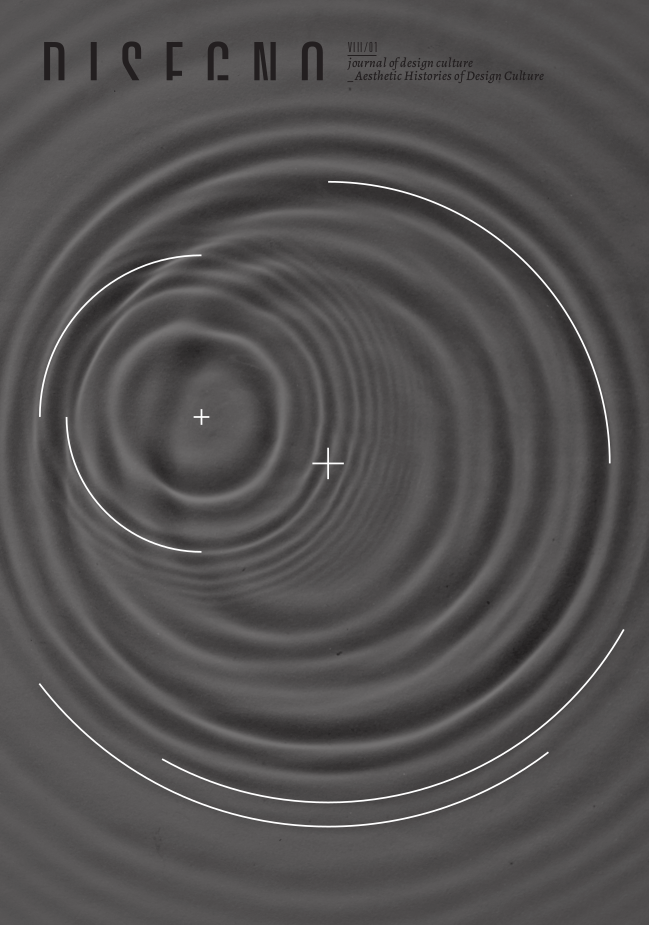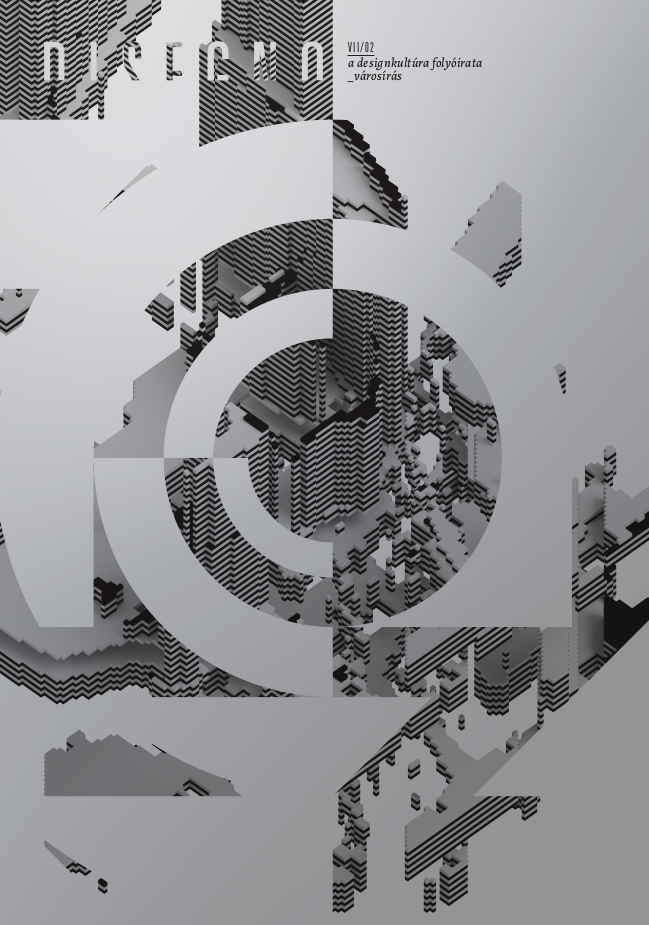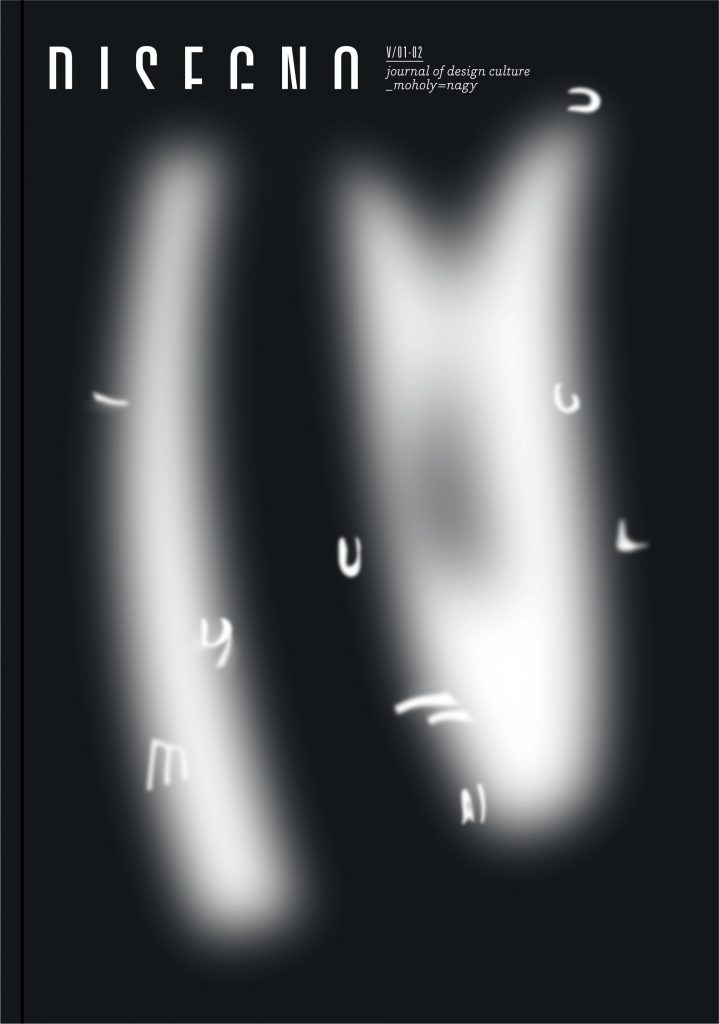The issue can be accessed here.

a designkultúra folyóirata / journal of design culture
The issue can be accessed here.

A Disegno 2023/2 tematikus lapszáma szabadon olvasható és letölthető.

The totalitarian art of various historical and contemporary regimes from that of Mussolini through Hitler to Stalin has become a legitimate research topic from the point of view of the total aestheticization of the world in design capitalism. One of the legacies of Romanticism—the age of “aesthetic differentation” (Gadamer)—is the ambition to make art autonomous from other lifewords.
Ever since, the counter tendency of reunification has pushed back against the perceived losses to values and life qualities that result from the autonomy of art. The Romanticists, and then the Avantgarde already tried to generally re-aestheticize their lifeworlds and create a certain total art of life.
These intellectual endeavours often ended up being engulfed, stolen, and culturally appropriated by totalitarian regimes before being gradually dismissed by them as degenerate or politically designated as representative of ideologies striving for a totalitarian state art based on the total aestheticization of politics. Design was the bastard child of this process and the culture industry was gradually created as an unfortunate result of the aim to blend art and life.
During the neoliberal revolution in the Postmodern era this aestheticization accelerated to that extent that we currently live in a design capitalism with its total aestheticization of the world in which virtually every aspect of our lifeworlds is meticulously designed. The “posthumous era” (Garcés) is defined by the total forgetfulness or even the unbearable designedness of being in a perfectly “sublimated slavery” (Marcuse) that hinders all our capacities to recognize the overexploitation we experience through our lives. Understanding the art of the totalitarian state could surely help us better negotiate our current conditions in design capitalism.
This call is open to (but not restricted to) the following topics
Disegno accepts research papers (5000–7000 words), essays (c. 3000 words), and book/exhibition reviews (c. 2000 words). Research papers undergo double-blind peer review; reviews and essays are typically reviewed by the editors. If you are interested, please submit a 150–250 word abstract, 5 keywords, and a 140-word CV in prose form to disegno@mome.hu
Deadlines:
July 30: submission of abstracts
August 15: feedback on accepted proposals ● October 30: deadline for submitting the accepted papers ● May 2025: publication
Immár az emberiség nagyobbik része városokban él, legyenek azok hivatalos megapoliszok, avagy illegális „árnyékvárosok” (Robert Neuwirth). New York, Casablanca, Sanghai és Rio, s az őket övező-átszövő szlömök és dzsumbujok Észak-Amerikában és Ázsiában, bidonville-ek Észak-Afrikában, vagy favelák Dél-Amerikában. A város designkultúrája határozza meg többségünk életvilágát, a város a zsigereinkben huzalozott immár jó ideje. A város álmaink és tetteink, vágyaink és csalódásaink, örömeink és bosszúságaink alfája és omegája. Városban gondolkodunk, érzünk és érzékelünk. Jóllehet városi környezetünket mi alkotjuk, az legalább annyira formál bennünket is. A városkép, ahogy Kevin Lynch fogalmazott már a hatvanas évek elején, nem csupán vizuális: multiszenzoriális élményt nyújt. Ez a tapasztalat, amely a designkultúra kutatóját is foglalkoztatja, diszkurzív forrásokban testesül meg: városéletrajzokban és városregényekben – mint Simon Sebag Montefiore Jeruzsáleme, Geert Mak Amszterdamja, Michael Pye Antwerpenje, Joyce Dublinja, Giuseppe Montesano Nápolya –, képeken: fametszetektől rézkarcokon, festményeken, fotókon és animációkon át a filmekig; háromdimenziós, „architekturális” (Eco) forrásokban: szobrokban, installációkban, vagy éppen idézetek sorával dolgozó városi tájakban és témaparkokban.
Magyar nyelvű számunkba különösen szívesen fogadunk a város múltjával foglalkozó írásokat, amelyek a város eszméjének és eszményének megszületésével, a városírás (writing cities), a város diszkurzív és ikonográfiai megalapításának történetével (gondoljunk például Hogenberg és Braun Civitates orbis terrarumára!), a város emberi élettapasztalataival, életvilágával foglalkoznak. Puszta munkaoptimalizálási területként vagy természetes életkörnyezetként alakult-e ki a város, és elgondolható-e szembeállítás nélkül város és természet? Milyenek a város ökológiái (Banham)? Miként affirmálja és tagadja az uralmi szándékokat? Hogy változik a középkortól Hausmann Párizsán és Cerdá Barcelonáján át korunkig, a tiltott, nyílt, láthatatlan, látható, tapintható, ízlelhető városok élménye – sétálva, futva, kordén, velocipéden, léghajóból, önvezetve, hoverboardon, szárazon és költőien, Moszkvától Petuskiig, a Csömöri úttól egészen a Filatori gátig? Hiába utazhatják be az emberek „egész Európát, olyan benyomásuk marad, mintha sosem léptek volna ki […] az ízléstelen pályaudvarokból, amelyek mindenüvé elkísérik őket – akárcsak semmittevésük és az élvezetre való képtelenségük […] A látás nem jelent már semmit. Azért érkezünk meg, hogy továbbutazzunk,” írja Delacroix a XIX. század közepén: mi a „generic city” disztópiája és utópiája a kezdetektől Koolhaasig? Nyitottak vagyunk a jelen nagyvárosi kultúrájának kritikai olvasására és a jövő városának kutatására is, az okos városok, a digitális figyelem és fegyelem, vagy az összeomlás utáni katasztrófavárosok és nyomornegyedek vízióira – testesüljenek meg ezek urbanisztikai, várostervezői, futurisztikai koncepciókban, avagy műalkotásokban. S bár nem rajongunk a poszthumanista elméletekért, szívesen veszünk olyan kritikai felvetéseket is, amelyek a poszthumanista város tematikáját érintik.
Felvetések:
a város művészeti reprezentációi és metaforái • városéletrajzok • apodemica, utazási irodalom és a város • városírás, városregény • a város mint mnemotechnikai eszköz • „how buildings learn” és hogyan felejtenek a kerületek? • térkép és város • megtestesült olvasás (embodied reading) és 4E cognition a városkutatásban • a város kognitív modellezése • biopolisz • természet/kert/város • városimázs • „Keep Austin Weird” • rekonstruktív stílus • „nemzeti építészet” • árnyékvárosok, nyomornegyedek, favelák és bidonville-ek • „Learning from Lagos” – a rosszléti város ideológiái • trollurbanizmus: triggerelő köztéralakítás • a közművek, csőposták, kábelek, adatsugarak szövedéke • milyen formaviszonyok – utca, tér, árkádsor, járda és út, pozitív-negatív sarkok – keltik a város képzetét? • a szabályozás hatása a városélményre • okos város, digitális felügyelet, digitális diktatúra • nem-Budapest • Érd: a magyar szuburbia eredője • Fiume (mint tégely és zsilip)
Lapunk főleg tanulmányokat, esszéket, és recenziókat közöl kb. 6000, 3000 és 2000 szóban, de kísérletezőbb formátumokat is megfontolunk. A tanulmányok elbírálását a szerkesztők mellett (kölcsönös anonimitásban) két független külső szakértő végzi.
A 150–250 szavas absztraktokat 130–150 szavas életrajz kíséretében január 31-ig várjuk a disegno@mome.hu címre.
Szeretettel várunk minden kedves érdeklődőt a Disegno folyóirat kettős lapbemutatójára december 20-án szerdán 17 órától a Magvető Caféban!
Résztvevők: Almási Zsolt, Sebestyén Ágnes Anna, Z. Karvalics László és a szerkesztők.
A bemutatásra kerülő lapszámok:
S/D: Sign and Design, 2022/2
Designing Digital Humanities, 2023/1
In the last nearly seven decades, the Arts and Humanities have drawn a lot from the methodology and toolkit of computational technology. As the two domains linked and influenced each other, new research areas were defined under the terms of computational humanities, humanities informatics, and, from the 2000s onwards, digital humanities (DH) as an umbrella concept. Whether DH is understood as a discipline, or a methodology and a set of tools used in specific fields of Arts and Humanities, its emergence has definitely been decisive.
As researchers of DH typically agree, the domain has two fundamental aspects: data and design. Data-driven research is already a widely known, theoretically founded approach even in many fields of Arts and Humanities. Without the appropriate quality and quantity of research data, data-driven DH research would not exist. Existing publications on DH have focused largely on the importance of data, with less attention being paid to design, both in a theoretical and practical sense.
The Special Issue Designing Digital Humanities is dedicated to the diverse interactions of DH research and design. From a theoretical point of view, designing is the process of modeling our knowledge, organising information, and building structures. On the other hand, design in a practical sense may provide an interface to this knowledge—or research data—from aesthetic and functional perspectives. This call is open to (but not restricted to) both approaches in the following topics.
Disegno accepts research papers (5000–7000 words), essays (c. 3000 words), and book/exhibition reviews (c. 2000 words). Research papers undergo double-blind peer review; reviews and essays are typically reviewed by the editors.
Expected timeline of the publication process:
Extended deadline: April 23, 2023: submission of abstracts (300 words).
April 5, 2023: submission of abstracts (300 words). April 15, 2023: feedback on accepted proposals.
July 15, 2023: deadline for submitting the finished papers. Fall 2023: publication.
Our journal’s new issue on László Moholy-Nagy has just been published!
For this issue we invited scholars, researchers, and designers to present their thoughts and perspectives and thereby provide a critical assessment of one of the most important designers, educators, and thinkers of the early-twentieth century, László Moholy-Nagy.
The title of the issue (moholy=nagy) refers to Moholy-Nagy’s signature.
The issue can be accessed here.

cover design: Borka Skrapits